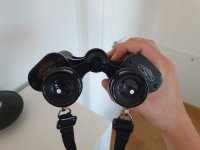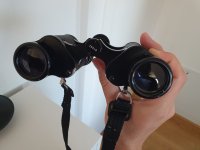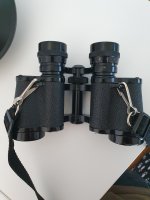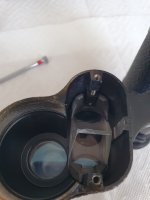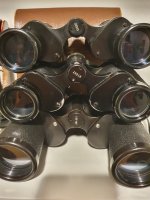Binocollector
Well-known member

Hi guys and gals,
I recently bought another vintage bino - an 8x30 "Hanseat", made in German from 1972. I am not 100 % sure but the construction of the prism assembly suggests that these were either made by Hartmann/Wetzlar or are a direct copy by another German company.
I paid around 20€ and they looked good on the pics but unfortunately had really badly fogged prisms. Maybe some lacquer fogging out on the inside or the former owner was a smoker (they didn't smell however).
Anyways I had to open them and clean the prisms. The interesting thing about these is the genius prism assembly. There are tiny screws underneath the ones that hold the prism covers with which you can move the prisms from one side to the other by either tightening or loosening the screws. So the prisms can be aligned without taking apart the bino. Opposed to the construction of Japanese binos from that time that had the prisms cemented in place and fixed with a metal strip on top that slotted into the body on the inside and final alignment achieved with eccentric rings around the lenses.
This construction of the Hanseat is much more repair-friendly.
It's the first time I ever removed prisms. So far I only did minor work on binos like adjusting eccentric rings or cleaning the inside of the ocular and stuff like that.
So I'm very happy with the successful operation on the Hanseat. A really nice bino. Sharp, BaK4 prisms, good coatings and very solid construction overall.
Here are some pics.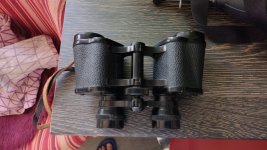
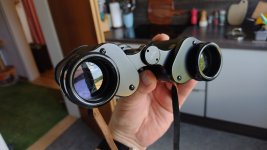
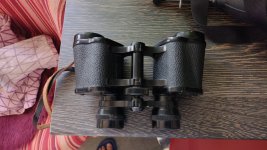
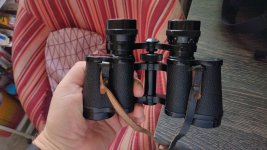
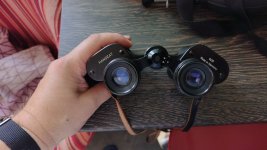
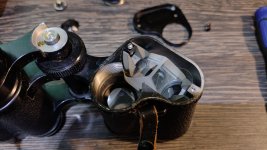
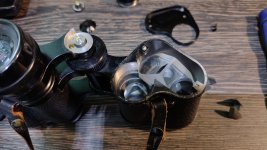
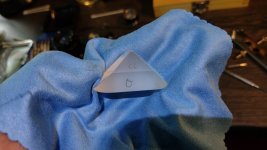
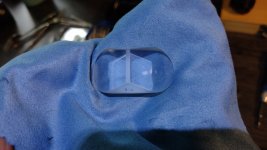
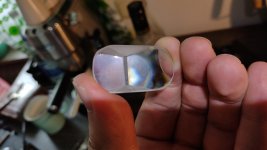
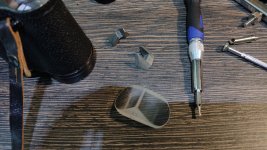
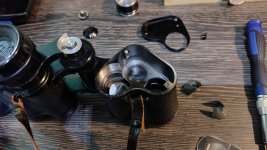
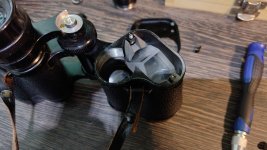
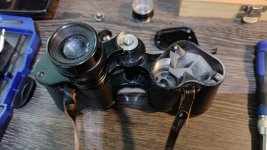
I recently bought another vintage bino - an 8x30 "Hanseat", made in German from 1972. I am not 100 % sure but the construction of the prism assembly suggests that these were either made by Hartmann/Wetzlar or are a direct copy by another German company.
I paid around 20€ and they looked good on the pics but unfortunately had really badly fogged prisms. Maybe some lacquer fogging out on the inside or the former owner was a smoker (they didn't smell however).
Anyways I had to open them and clean the prisms. The interesting thing about these is the genius prism assembly. There are tiny screws underneath the ones that hold the prism covers with which you can move the prisms from one side to the other by either tightening or loosening the screws. So the prisms can be aligned without taking apart the bino. Opposed to the construction of Japanese binos from that time that had the prisms cemented in place and fixed with a metal strip on top that slotted into the body on the inside and final alignment achieved with eccentric rings around the lenses.
This construction of the Hanseat is much more repair-friendly.
It's the first time I ever removed prisms. So far I only did minor work on binos like adjusting eccentric rings or cleaning the inside of the ocular and stuff like that.
So I'm very happy with the successful operation on the Hanseat. A really nice bino. Sharp, BaK4 prisms, good coatings and very solid construction overall.
Here are some pics.




















